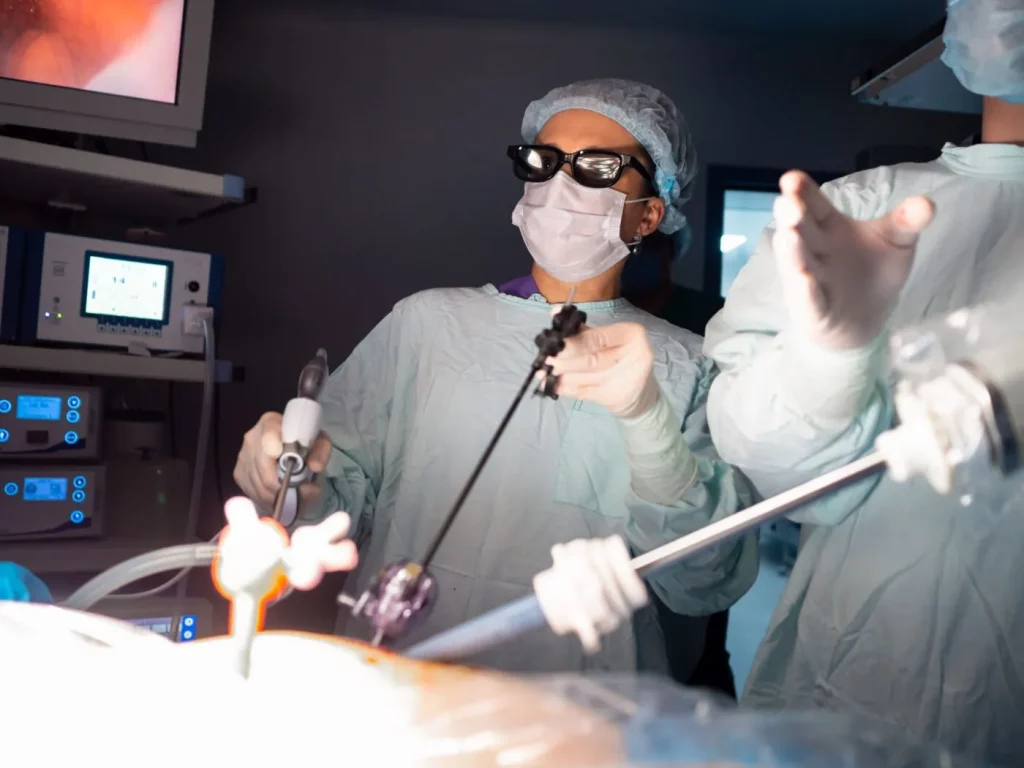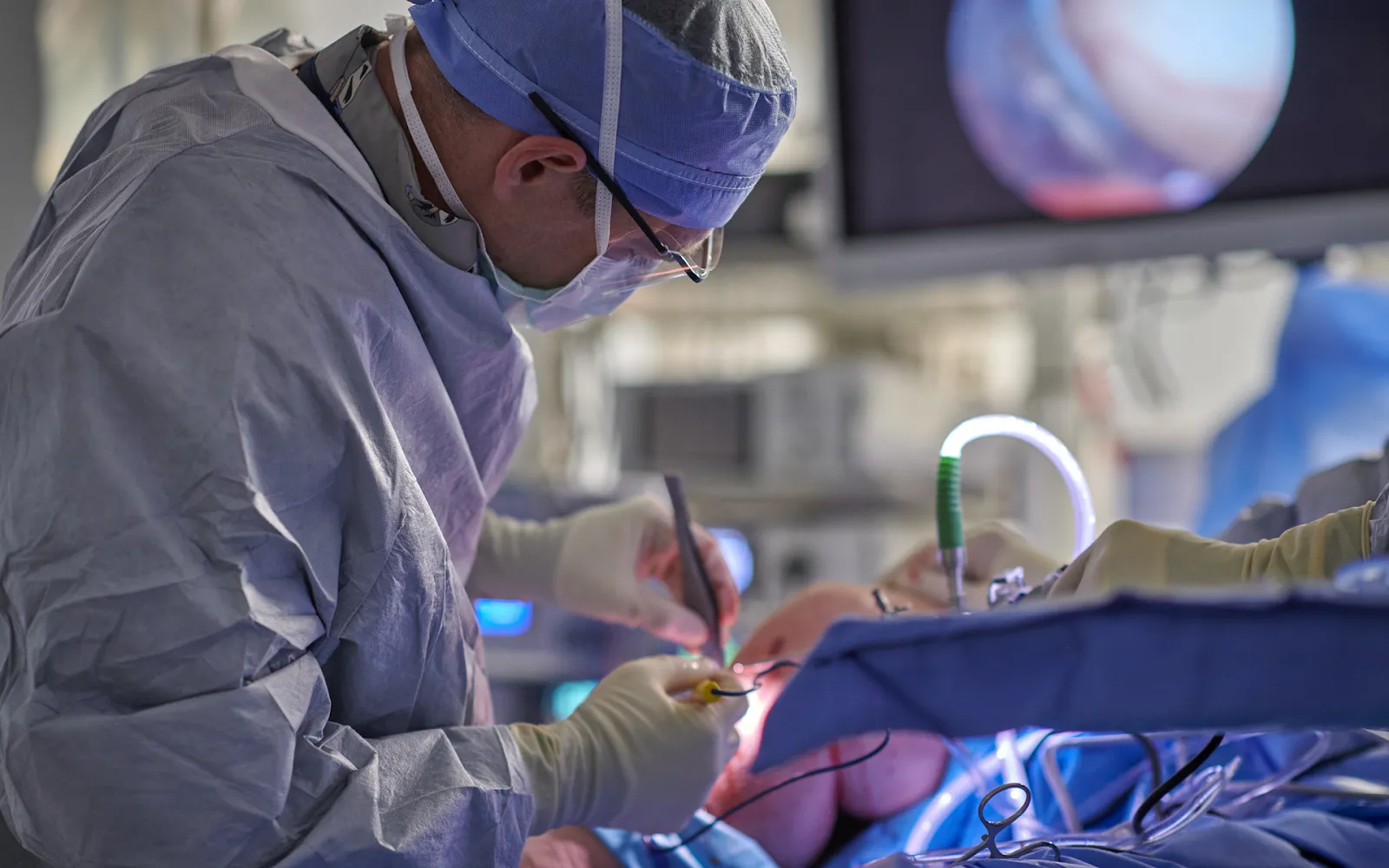As you journey through the landscape of orthopedic surgery, you’ll find that the field has gently pivoted from its rudimentary origins to a sophisticated frontier of medical science.
You’ve tracked its evolution from the early days when treatments were more about bracing for discomfort to modern times where pain is significantly mitigated and recovery times are drastically reduced.
You’ll witness how breakthroughs in surgical techniques have been instrumental in enhancing patient outcomes and how the incorporation of cutting-edge technology has reshaped the very fabric of orthopedic care.
As you explore the pioneering materials and prosthetics that have emerged, consider the implications of such advancements on future trends in orthopedic treatment.
The question then becomes, how will these progressive strides influence the next generation of surgical interventions, and what does this mean for you or your loved ones who may one day require such care?
Key Takeaways
- The introduction of aseptic techniques, radiography, anesthesia, and antibiotics have greatly contributed to the development of orthopedic surgery.
- Surgical techniques have evolved with the introduction of computer-assisted surgery, robotic-assisted surgery, and advanced arthroscopic techniques, leading to increased accuracy, reduced trauma, and quicker recovery times.
- Technology plays a crucial role in modern orthopedic surgery, with 3D imaging, intraoperative imaging, robotic assistance, and computer navigation enhancing patient outcomes and reducing complication rates.
- Pioneering materials and prosthetics have improved orthopedic surgeries by utilizing biomaterials, osseointegration, intelligent materials, and minimizing the risk of rejection and complications. These advancements have the potential to revolutionize post-surgical care.
Everything You Need To Know About Us – Physicians Group, LLC
The expert team at Physicians Group, LLC, a specialized clinic for automobile accident injuries, offers comprehensive care across a network of 25 accessible locations.
TOUCH BASE FOR ASSISTANCE WITH YOUR APPOINTMENT ONLINE
With a widespread presence in regions including Auburndale, Bradenton, Brandon, Palmetto, Ft Myers, Jacksonville Beach, Jacksonville, Orange Park, Lakeland, Clearwater, New Port Richey, Port Charlotte, Sarasota, Sebring, Spring Hill, St. Petersburg, Tampa, Temple Terrace in Florida, as well as Brooklyn Park, Robbinsdale, Minneapolis, Richfield, and St Paul in Minnesota, Physicians Group, LLC is a prime destination for addressing injuries post-automobile accidents.
Our Expertise
Endorsed by The Joint Commission, Physicians Group, LLC stands as a comprehensive hub for the treatment of musculoskeletal injuries. Its multidisciplinary team comprises seasoned medical doctors, skilled chiropractors, osteopathic professionals, attentive nurse practitioners, and proficient physician assistants.
The group is adept at managing a spectrum of musculoskeletal discomforts, from joint, back, to neck pain. By leveraging state-of-the-art technology and diagnostic tools like DynaROM™ motion testing, digital motion X-rays (DMX) for the cervical spine, and cutting-edge regenerative therapies, they are equipped to foster optimal recovery.
Emphasizing a nurturing, patient-focused atmosphere, the dedicated personnel at Physicians Group, LLC ensures thorough consultations and in-depth discussions, allowing them to grasp every patient’s specific complaints and aspirations fully. Treatment plans emphasize non-invasive and integrative approaches, with surgical interventions being considered as necessary.
Don’t allow the aftermath of vehicle accidents to impede your lifestyle. Initiate your path to recovery at Physicians Group, LLC by reaching out to your local branch or by securing an appointment through our online platform.
Our Services:
Conditions We Treat:
Contact Us:
→ https://physiciansgroupllc.com/contact-us/
Historical Milestones in Orthopedics
How did the pivotal discoveries and advancements in orthopedic surgery shape modern medical practice?
You must consider the seminal breakthroughs, like the introduction of aseptic techniques by Joseph Lister, which drastically reduced infection rates.
Then, there’s the development of radiography by Wilhelm Röntgen, giving you the ability to diagnose fractures and musculoskeletal conditions accurately.
The advent of anesthesia and antibiotics further revolutionized postoperative care, improving patient outcomes considerably.
Materials science advanced, providing you with biocompatible implants for joint replacements, a game-changer for mobility restoration.
Arthroscopy, pioneered by Masaki Watanabe, allowed for minimally invasive interventions, reducing recovery times.
Each milestone enhanced orthopedic surgery’s efficacy, underpinning today’s protocols and technologies, and you now rely on these historical foundations for every successful orthopedic treatment administered.
Breakthroughs in Surgical Techniques
Building on these historical foundations, surgeons have achieved remarkable advancements in orthopedic surgical techniques, enhancing precision and patient outcomes. You’ll find the introduction of computer-assisted surgery (CAS) pivotal, allowing for meticulous preoperative planning and real-time guidance during procedures. This innovation affords surgeons the ability to conduct minimally invasive surgeries with heightened accuracy, leading to reduced trauma and quicker recovery times.
Robotic-assisted surgery represents another significant leap, granting unprecedented control and repeatability in complex joint replacements and spinal surgeries. These robotic systems complement the surgeon’s skill, ensuring implant alignment and optimal positioning with sub-millimeter precision.
Moreover, advanced arthroscopic techniques permit you to address joint pathology with minimal incisions, preserving tissue integrity and facilitating functional rehabilitation.
Collectively, these breakthroughs signify a transformative era in orthopedic surgery, underpinned by technological synergy and a refined understanding of musculoskeletal dynamics.
Role of Technology in Modern Surgery
Technology serves as the cornerstone of modern orthopedic surgery, revolutionizing procedures with tools that enhance precision, safety, and patient outcomes. You’ll find the operating room now packed with advanced equipment, from imaging systems to robotics.
Here’s how technology is woven into the fabric of orthopedic care:
- Imaging Technology
- 3D Imaging: Generates comprehensive models for preoperative planning.
- Intraoperative Imaging: Offers real-time guidance, minimizing surgical invasiveness.
- Surgical Tools
- Robotic Assistance: Increases accuracy in joint replacement.
- Computer Navigation: Provides detailed visual maps for surgical precision.
These technologies contribute to reduced complication rates, shorter hospital stays, and improved functional recovery. They require surgeons to engage in continual learning to master these sophisticated systems and integrate them seamlessly into patient care.
Pioneering Materials and Prosthetics
While modern orthopedic surgery has been transformed by technological advancements in imaging and surgical tools, the materials and prosthetics used in these procedures are equally crucial, continually pushing the boundaries of what’s possible in patient care and recovery.
Innovations in biomaterials, such as the development of ultra-high molecular weight polyethylene (UHMWPE) and titanium alloys, offer superior strength and biocompatibility, minimizing the risk of rejection and post-operative complications.
You’re seeing prosthetic designs that incorporate osseointegration, fostering a direct structural and functional connection between the implant and bone. This advancement enhances stability and longevity.
Intelligent materials capable of drug delivery and self-healing are also being scrutinized for orthopedic applications, potentially revolutionizing post-surgical care and reducing the likelihood of secondary procedures.

Future Trends in Orthopedic Treatment
Peering into the future of orthopedic treatment, advancements in biotechnology and materials science are set to revolutionize the way we approach musculoskeletal disorders and injuries.
- Biotechnology Enhancements
- Gene editing: CRISPR-Cas9’s potential to correct genetic disorders affecting the musculoskeletal system.
- Tissue engineering: Scaffold technologies facilitating new bone and cartilage growth.
- Materials Science Innovations
- Smart biomaterials: Materials that can respond dynamically to bodily changes.
- 3D printing of implants: Customization and optimization of implants for individual patient anatomy.
You’ll observe significant strides in personalized medicine, with treatments tailored to your genetic makeup and lifestyle. The integration of these technologies promises not only improved patient outcomes but also more efficient recovery processes, heralding a new era in orthopedic care.
Frequently Asked Questions
How Does Patient Lifestyle and Activity Level Affect the Longevity and Success of Orthopedic Treatments?
Your lifestyle and activity level significantly impact orthopedic treatment outcomes. Vigorous activities may shorten implant life, while a sedentary lifestyle can slow rehabilitation and compromise treatment effectiveness. It’s about finding the right balance.
What Are the Ethical Considerations Involved in the Development and Implementation of New Orthopedic Technologies and Treatments?
You must consider patient consent, potential risks, and accessibility when implementing new orthopedic technologies, ensuring ethical standards are met during development and clinical application to maintain professional integrity and patient trust.
How Do Orthopedic Surgery Outcomes Vary Across Different Populations, Including Age Groups, Genders, and Socioeconomic Statuses?
You’ll notice orthopedic surgery results differ by age, gender, and wealth. Younger patients may recover faster, while disparities in gender and income can affect both access to care and postoperative outcomes.
What Are the Most Common Psychological Effects on Patients Post-Orthopedic Surgery, and How Are These Addressed in Patient Care?
You’ll often experience anxiety or depression post-surgery, which professionals address with counseling, medication, and support groups to ensure your mental health is as prioritized as your physical recovery.
How Is the Global Disparity in Access to Advanced Orthopedic Treatments Being Addressed, and What Are the Implications for International Health Equity?
You’re facing a challenge as global initiatives work to reduce disparities in orthopedic care, targeting resources, training, and technology transfers to improve health equity and access to advanced treatments worldwide.
Conclusion
In conclusion, you’ve witnessed orthopedic surgery’s remarkable journey, from early bone-setting practices to today’s minimally invasive techniques.
Advances in technology and biomaterials have revolutionized patient outcomes.
You’re now poised at the brink of a future where biologics, robotics, and personalized implants promise even greater precision and recovery rates.
Keep a keen eye on these trends, for they’ll dictate the trajectory of orthopedic care, enhancing your ability to restore function and improve lives.




